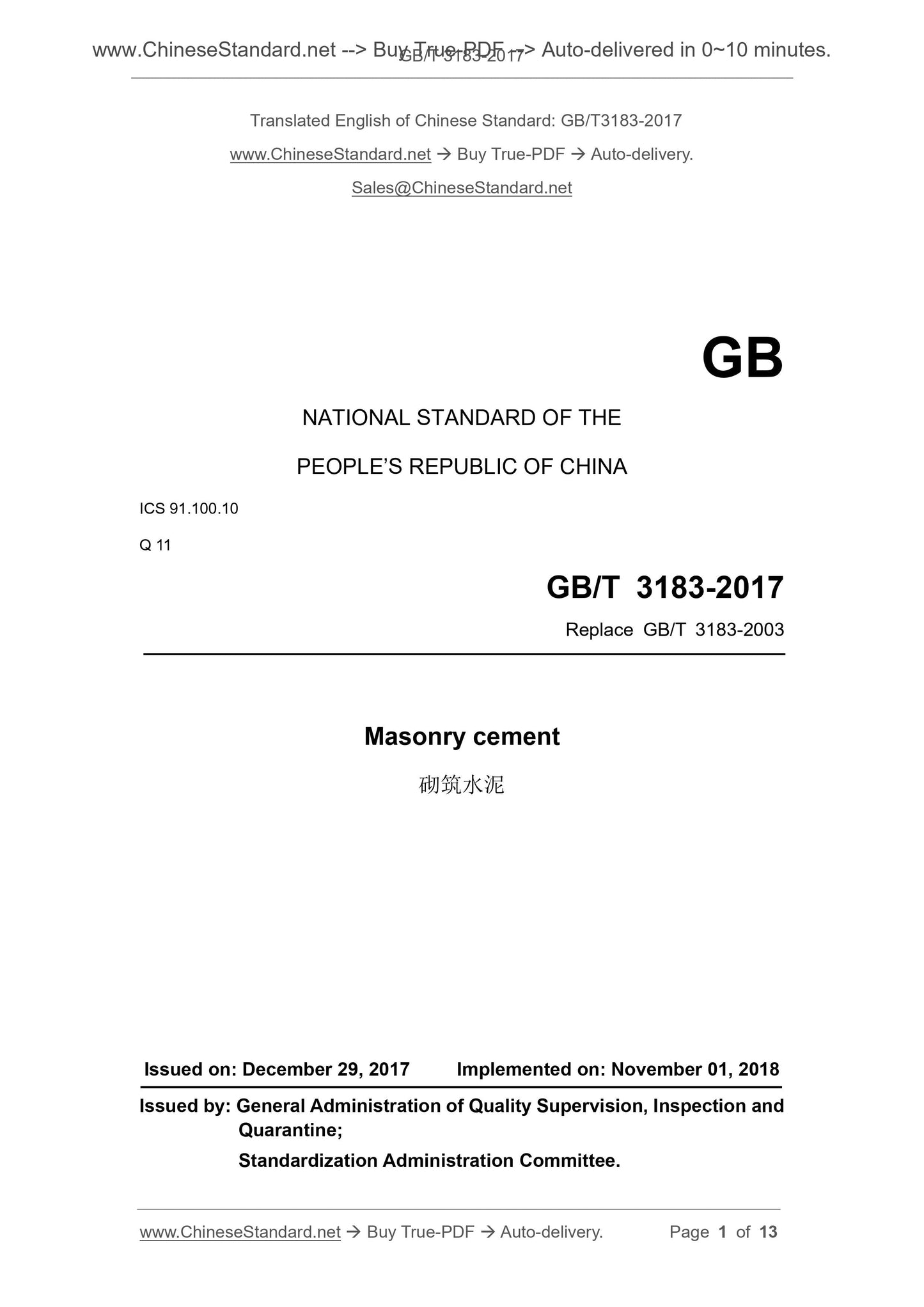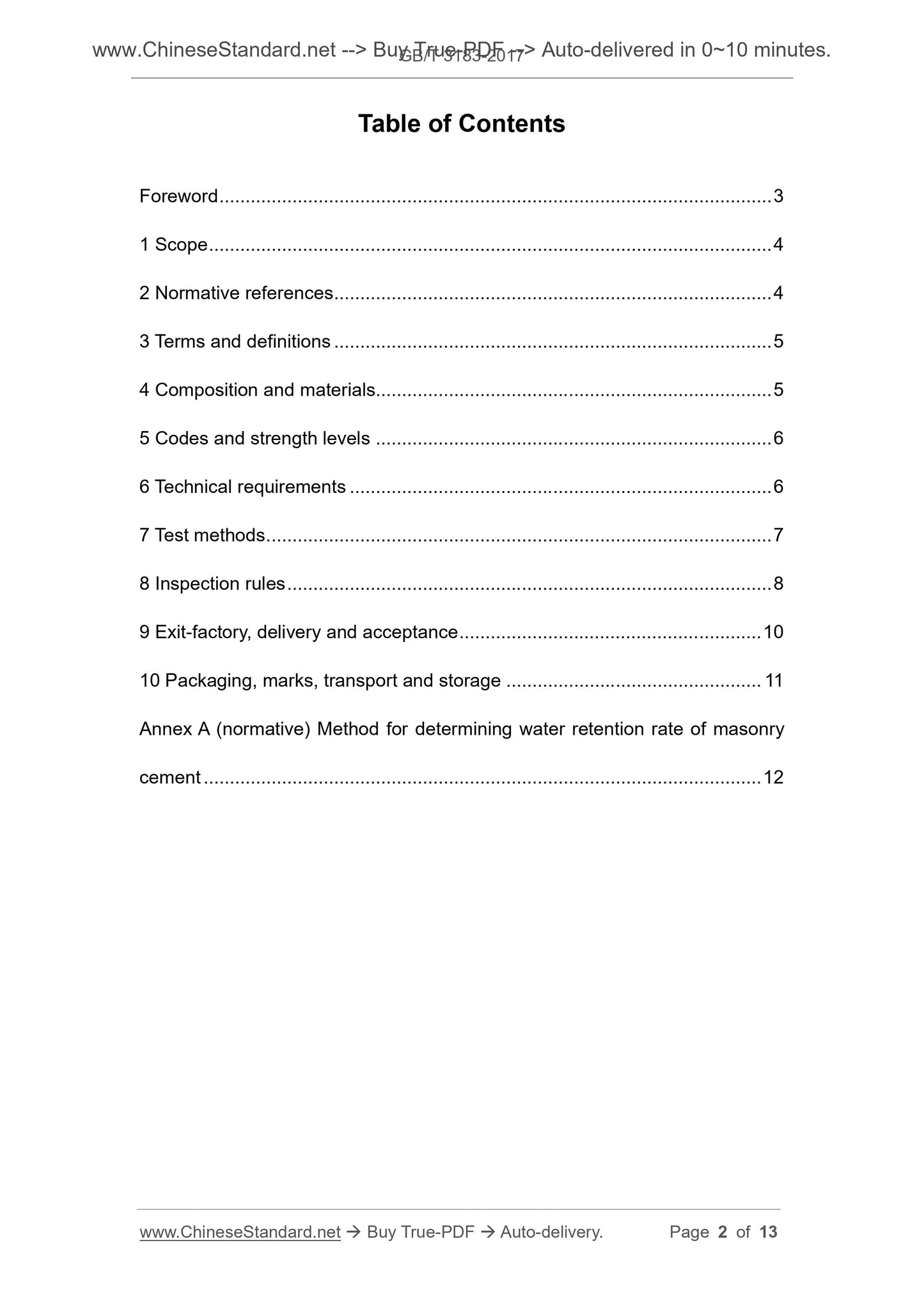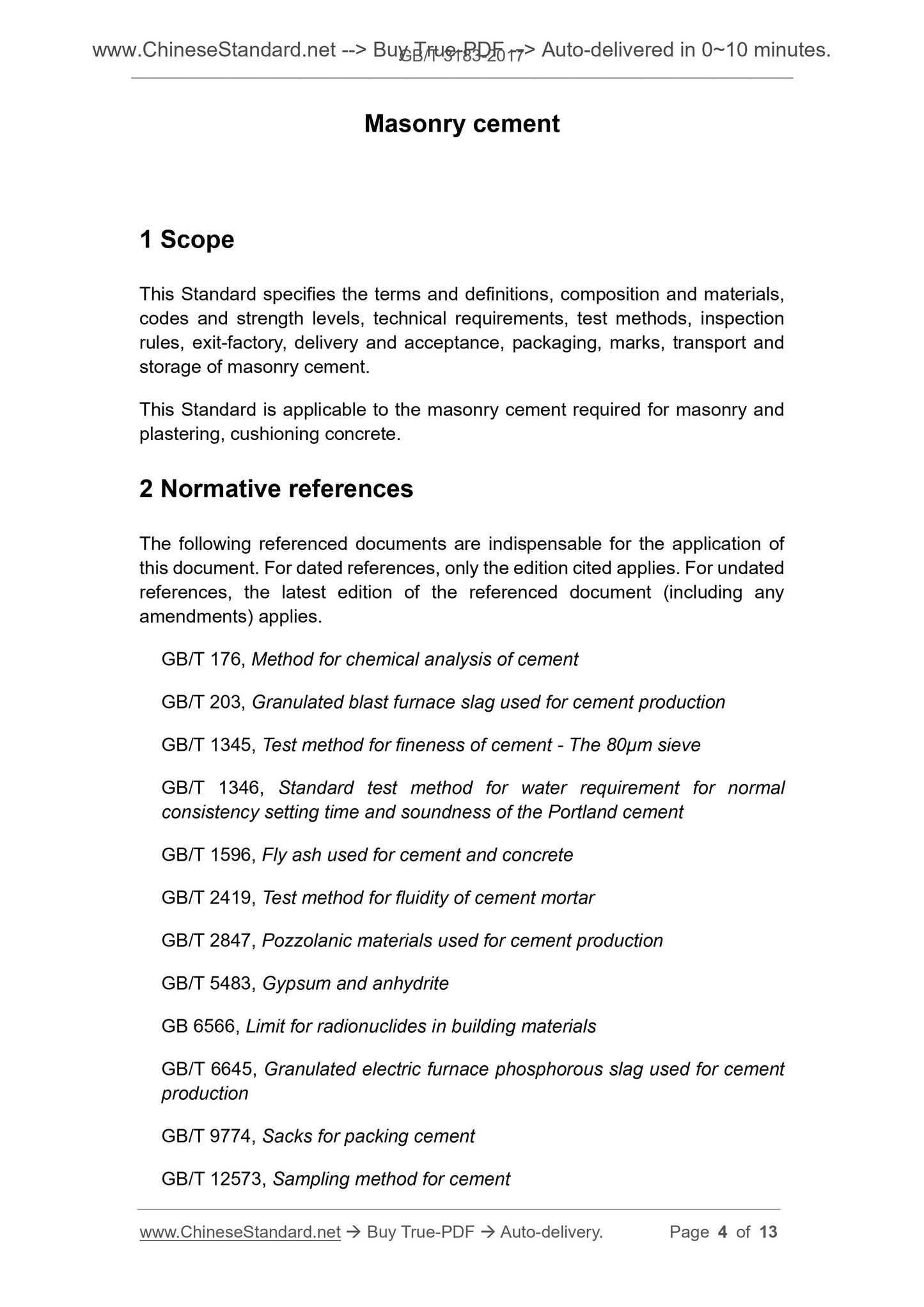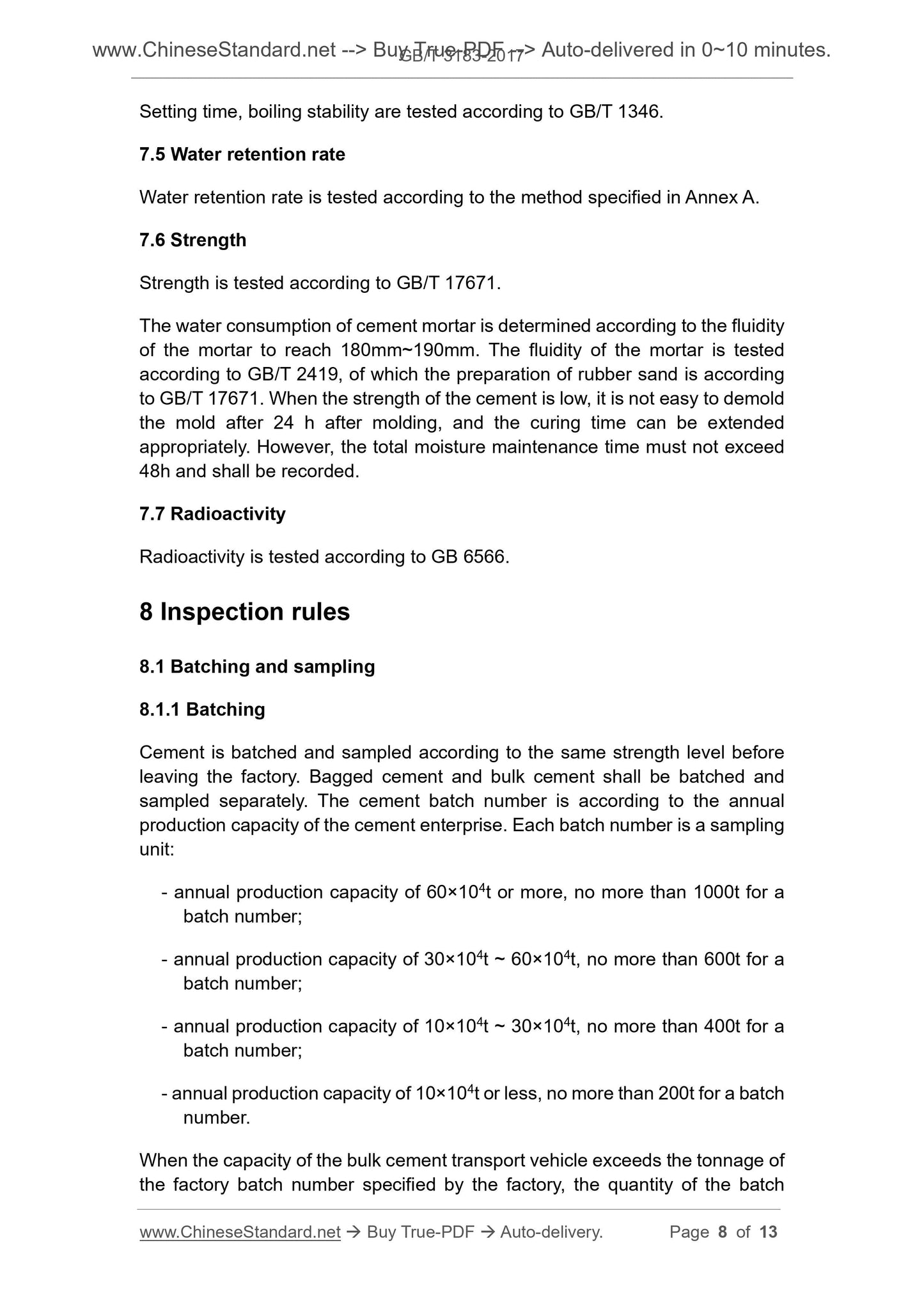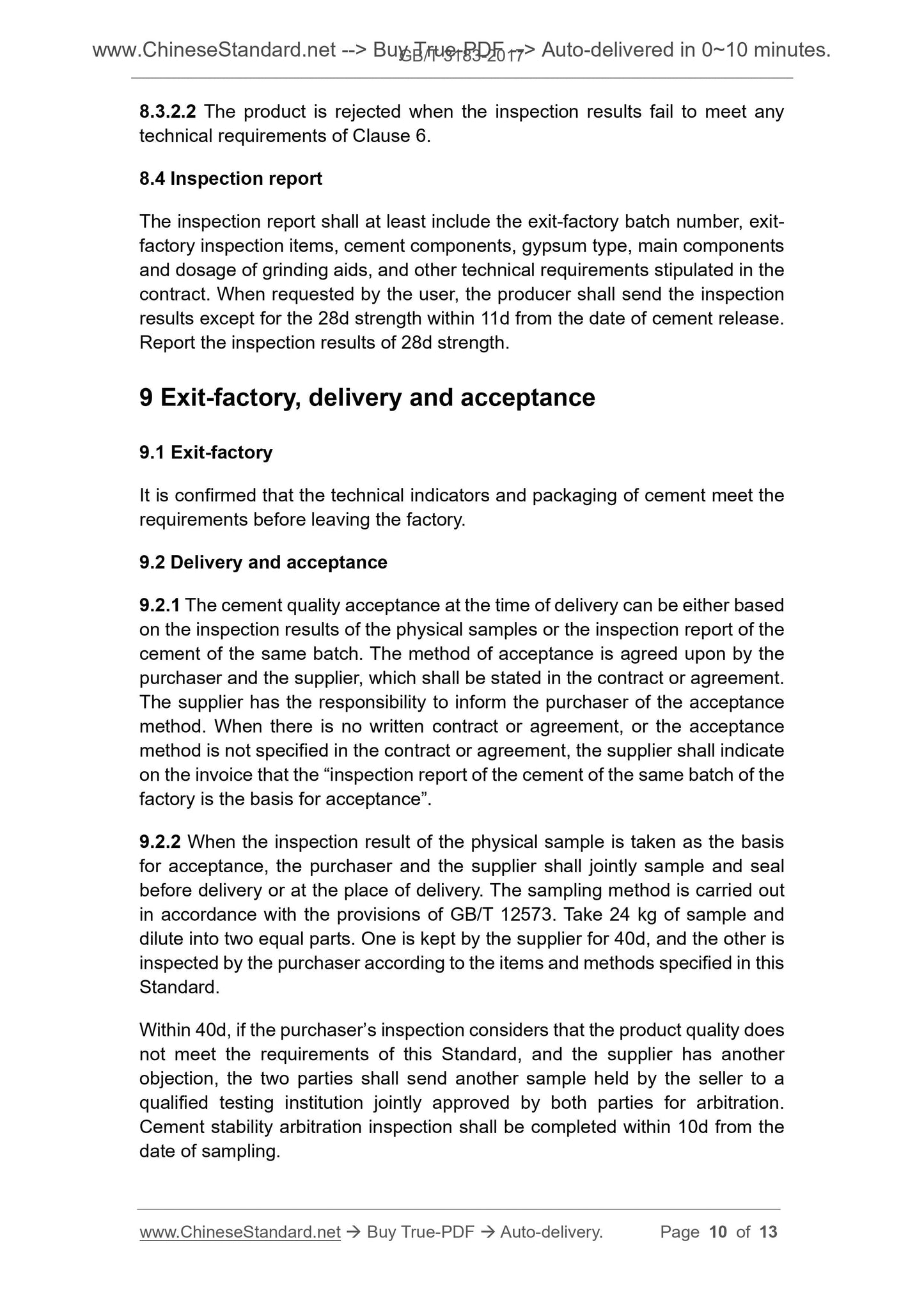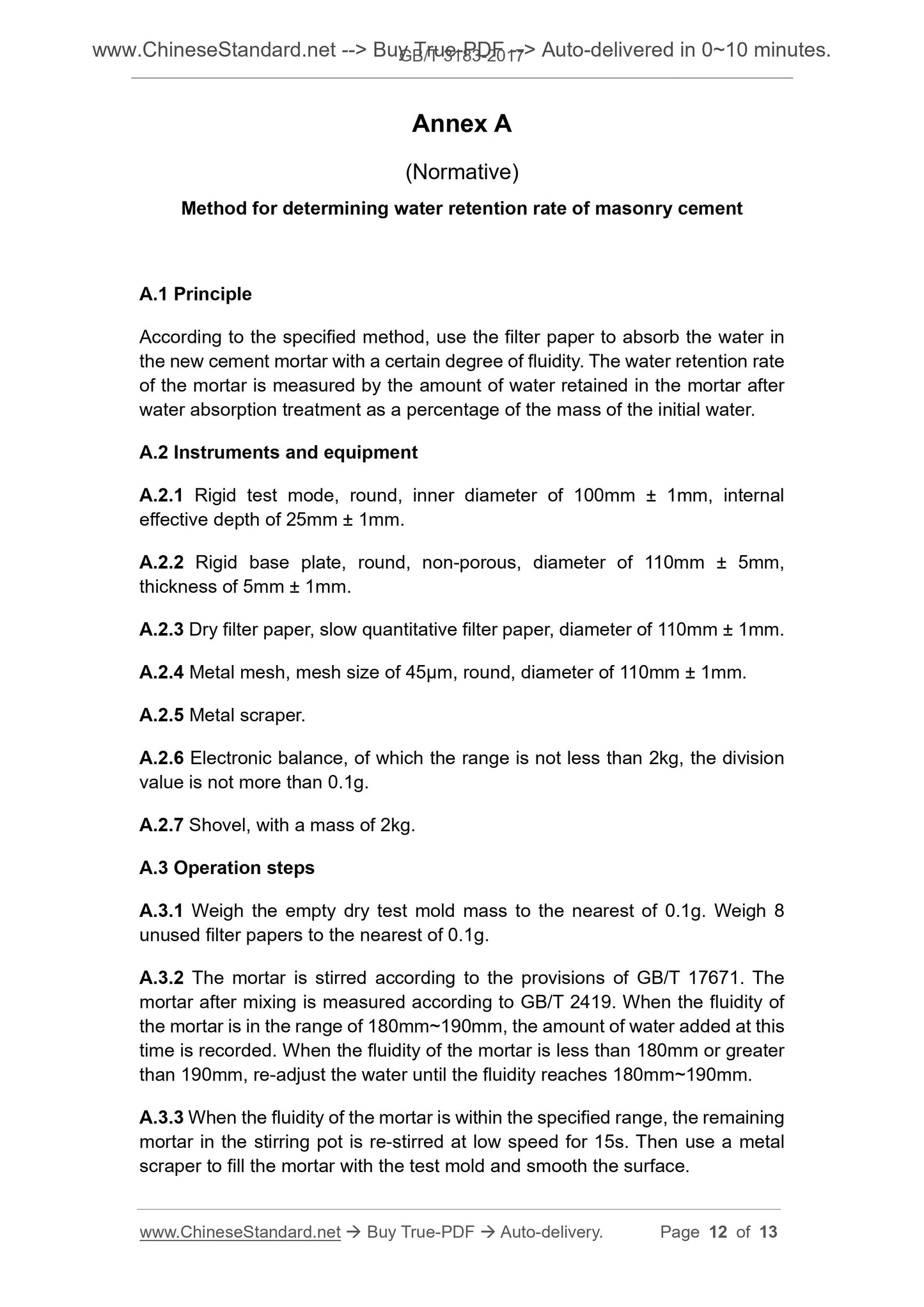1
/
of
6
www.ChineseStandard.us -- Field Test Asia Pte. Ltd.
GB/T 3183-2017 English PDF (GB/T3183-2017)
GB/T 3183-2017 English PDF (GB/T3183-2017)
Regular price
$135.00
Regular price
Sale price
$135.00
Unit price
/
per
Shipping calculated at checkout.
Couldn't load pickup availability
GB/T 3183-2017: Masonry cement
Delivery: 9 seconds. Download (and Email) true-PDF + Invoice.Get Quotation: Click GB/T 3183-2017 (Self-service in 1-minute)
Newer / historical versions: GB/T 3183-2017
Preview True-PDF
Scope
This Standard specifies the terms and definitions, composition and materials,codes and strength levels, technical requirements, test methods, inspection
rules, exit-factory, delivery and acceptance, packaging, marks, transport and
storage of masonry cement.
This Standard is applicable to the masonry cement required for masonry and
plastering, cushioning concrete.
Basic Data
| Standard ID | GB/T 3183-2017 (GB/T3183-2017) |
| Description (Translated English) | Masonry cement |
| Sector / Industry | National Standard (Recommended) |
| Classification of Chinese Standard | Q11 |
| Classification of International Standard | 91.100.10 |
| Word Count Estimation | 10,156 |
| Date of Issue | 2017-12-29 |
| Date of Implementation | 2018-11-01 |
| Older Standard (superseded by this standard) | GB/T 3183-2003 |
| Regulation (derived from) | National Standards Bulletin 2017 No. 32 |
| Issuing agency(ies) | General Administration of Quality Supervision, Inspection and Quarantine of the People's Republic of China, Standardization Administration of the People's Republic of China |
Share
